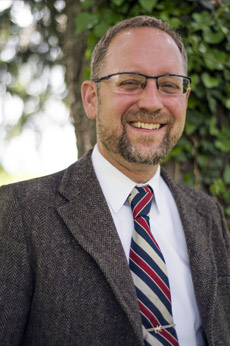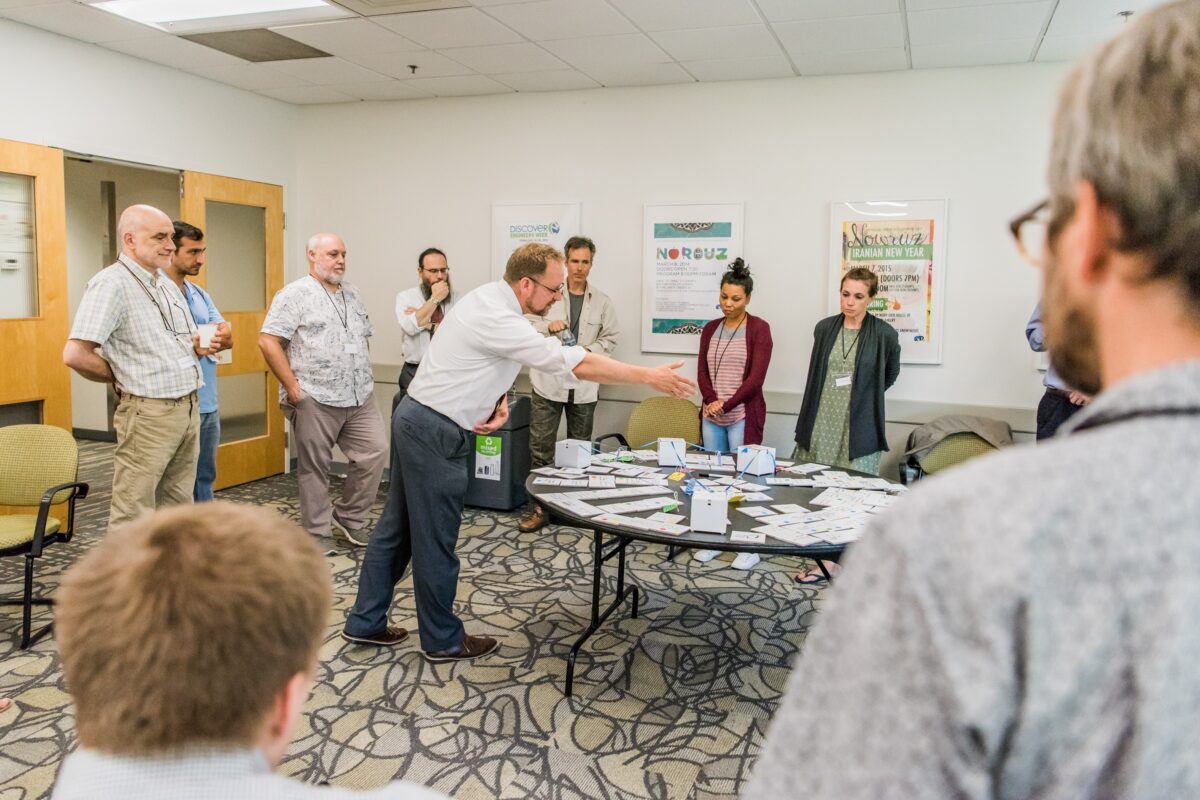What if no single moment in time pinpoints when life began on Earth? What if, instead, life has unfolded continuously through time, making it impossible to know—and, perhaps, not even worth asking—at which precise moment matter on Earth became what we call “life”? That’s the argument presented in a new perspectives article published in Journal of the Royal Society Interface by Stephen Freeland, director of UMBC’s individualized study program and a computational astrobiologist focused on life’s origins.
Freeland’s argument challenges the concept of the RNA world hypothesis, for decades the leading paradigm for explaining how life arose on Earth. In the RNA world hypothesis, RNA was the first to arise of the three core molecule types necessary for life as we know it: DNA, RNA, and proteins. Traditional versions of the RNA world hypothesis posit that originally RNA both self-replicated and carried out chemical reactions—critical processes for life. Later in life’s evolution, DNA and proteins, respectively, largely took over those functions.
However, over the last several years, even RNA world enthusiasts “are in retreat from the idea that it all begins with RNA,” Freeland says. Acceptance is growing for the potential existence of “pre-RNA” compounds that could have been important stepping-stones on the way to life.
“But this paper is trying to say something more subversive,” Freeland says. Not only was RNA not first, he argues, “Even precursors to RNA evolved many steps into the process.” Perhaps, rather than identifying a single point where life began, “it all traces back in a seamless ad infinitum progression,” Freeland says. “That’s a very different way of thinking about the universe from the way that I was raised to think about it.”

Paradigm shift
Emerging cracks in the RNA world hypothesis have opened Freeland and others’ minds to questioning other long-accepted paradigms. For example, traditionally, complex things are expected to break down into smaller, more stable components over time to reach equilibrium. But it’s not that simple.
In some physical systems, Freeland notes, a constant input of energy can cause building blocks of matter to spontaneously form more-complex structures. Researchers call these phenomena “active matter,” “self-organizing matter,” or other, related terms. This lack of consensus over terminology demonstrates how new a concerted focus on these systems is.
These self-organizing systems don’t defy fundamental physics principles, but they do require a shift in perspective. One must avoid applying assumptions made about systems at rest (without energy input) to understand why a more complex and ordered system would be more stable than a simple, disordered one. As it turns out, there is more than one way to think about equilibrium.
“Traditionally, we have tended to study life’s emergence from a particular equilibrium perspective, and that’s become a paradigm so deep that we’ve forgotten it’s even a paradigm,” Freeland says. Focusing on the ways matter moves and organizes itself, and why, rather than on stability and disorder, “is a different way of thinking about physics that’s so exciting.”

Window of change
Freeland argues that the physicists asking these questions, the biologists and chemists studying life’s origins, and researchers in other fields, such as artificial life, have more in common than they might realize, despite their fundamentally different views on things like how to define “equilibrium” in physical systems. However, at present they barely understand one another well enough to perceive their connections, he argues. He believes they could usefully collaborate more to tackle these huge questions of how the universe works.
“There’s low-hanging fruit here,” Freeland says, “if we can acknowledge that people outside our normal spheres are working on something relevant to us, then if we could only learn to communicate, we might find we are already a lot further ahead than we think we are.”
To encourage that communication, Freeland received a $226,000 grant from the Templeton Foundation to bring 30 international scholars in biochemistry, non-equilibrium physics, and artificial life to Prague, Czech Republic in June. He is organizing the event in close collaboration with colleagues at University of Tokyo, Georgia Tech, and Charles University in Prague. The attendees will explore what they have in common, develop new research questions, and compete for access to major funding to pursue their ideas.
As momentum builds in the scientific community to reconsider the primacy of the RNA world hypothesis, Freeland believes “a window of change is here” to ask big questions in new ways. And yet, even acknowledging that RNA was not the beginning of life would be just “a side effect of the more interesting point,” Freeland says, “—that there’s an awful lot we don’t know about how all this fits together.”
Header image: The Frederick Douglass Memorial Bridge in Washington, DC looks like DNA when viewed with its reflection at night. Researchers from a range of fields continue to debate when DNA arose in the sequence of events leading to life as we know it. Photo by Miki Jourdan, used under CC BY-NC-ND 2.0.

